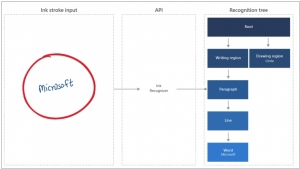Handwriting Recognition services for business
Updated: July 31, 2023
Handwriting recognition, also known as handwriting OCR (Optical Character Recognition), is a technology that converts handwritten text into digital, machine-readable format. This sophisticated technology uses machine learning algorithms and pattern recognition techniques to analyze and interpret handwritten characters, accurately recognizing and converting them into editable and searchable text. Handwriting recognition has diverse applications, such as digitizing handwritten documents, capturing handwritten notes on digital devices, and enabling data entry through handwriting on touchscreens. It can be especially valuable in industries like healthcare, education, and finance, where handwritten content needs to be efficiently processed and archived. By automating the conversion of handwritten text into digital format, handwriting recognition improves data accuracy, enhances document management, and accelerates business workflows, making it an indispensable tool in the modern digital era.
See also: Top 10 AI Platforms
See also: Top 10 AI Platforms
2019. Microsoft launched cloud APIs for form and handwriting recognition

Microsoft has unveiled a range of new cognitive services on its Azure Machine Learning cloud platform, catering to various document-related needs and offering enhanced capabilities. Among these services are the Ink Recognizer and Form Recognizer, which enable the conversion of handwritten text and paper documents into digital text and data. Additionally, the Conversation Transcription service facilitates the transformation of phone dialogues into text, with the ability to identify the author of each phrase. Another notable addition is the Personalizer service, which delivers personalized recommendations to website and online store visitors based on their behavioral patterns. Furthermore, Microsoft has introduced a user-friendly visual interface for creating machine learning models, empowering marketers and other professionals to engage with machine learning. By simply uploading the database and specifying the desired predictive parameter, users can explore the potential of machine learning in their respective fields.

